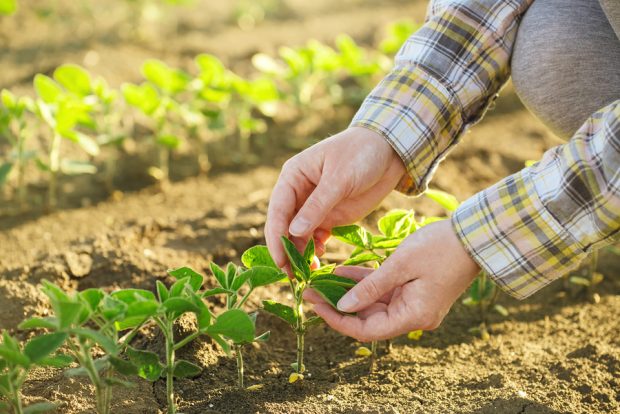It’s National Fresh Fruits and Veggies month! In honor of the special occasion, we’re providing readers with our top tips for starting a garden from scratch. Gardens are very beneficial for a person’s health. Not only does a garden provide a source of nutritional food, it’s also a great stress reliever and a fun family project parents can do with their kids.
What are you waiting for? Let’s get gardening!
Check the USDA Plant Hardiness Zone Map
Growing a successful garden starts with selecting the plants that are best suited for your local environment. You can get a better idea of which plants will thrive in your local climate by consulting a local nursery or using the USDA Plant Hardiness Zone Map.
There are 13 zones that are each broken down into two sub-zones. The zones are based on annual minimum temperatures during winter. Find your zone on the map and use it as a guide when you’re selecting plants. Plant and seed descriptions should note appropriate hardiness zones.
Use Companion Plants for Natural Pest Control
Companion planting is commonly used by gardeners that want to minimize pesticide use. It’s a technique that involves planting specific herbs, flowers and vegetables that repel destructive insects and attract beneficial bugs. Most of the companion plants below protect gardens by putting off aromas that pests can’t stand.
- Marigolds
- Zinnias
- Nasturtiums
- Tansies
- Mints
- Rosemary
- Thyme
- Basil
- Oregano
- Dill
- Sage
- Onions
- Chives
- Garlic
- Radishes
- Horseradish
Keep Seasonality in Mind
There are two types of vegetable gardens: spring gardens and fall gardens. Spring gardens are used to grow warm-weather plants that mature in the summer. Fall gardens, on the other hand, have plants that can handle colder temperatures and grow into the winter.
Growing a summer vegetable in your fall garden won’t yield very positive results. There’s more leeway with a spring garden, however, it’s still best to stick with fruits and vegetables that naturally grow during the season.
Choose the Best Spot for Your Garden
The second most important decision after plant selection is choosing a spot for your garden. Three things to consider are sun exposure, drainage and access.
Many fruits and vegetables will need at least five hours of direct sunlight. In warmer climates this is often enough, but in northern regions extra sunlight is never a bad thing. There should also be sufficient drainage to avoid over saturation after a rain shower. Finally, pick a spot where it’s easy to access the garden from all sides so picking, weeding and watering are convenient.
If you don’t have much yard space, you can still grow a garden. Vertical gardens hang from walls, trellises and fences. They’re great for growing tomatoes, peas, beans and more.
Know Your Soil
Soils have different pH levels and composition, which affects how plants grow. Luckily, there are at-home kits that can be used to test the soil for pH and nutrients. The test will reveal whether the soil is neutral, acidic or alkaline. Analyzing the soil will also tell you a lot about the composition. For instance, soil can consist of clay, sand or silt.
For most gardens, you’ll want to aim for soil with a pH of 7 (neutral). Organic matter can be added to balance the pH level and add essential nutrients. Options include compost, straw, wood chips, leaves and manure.
Looking for a new place to grow your garden? Square Cow Movers provides moving services in Nashville, Denver, Austin and everywhere in between. Give us a call today or use the online form to get an instant moving quote.
Original Source: https://squarecowmovers.com/starting-garden-new-home/

